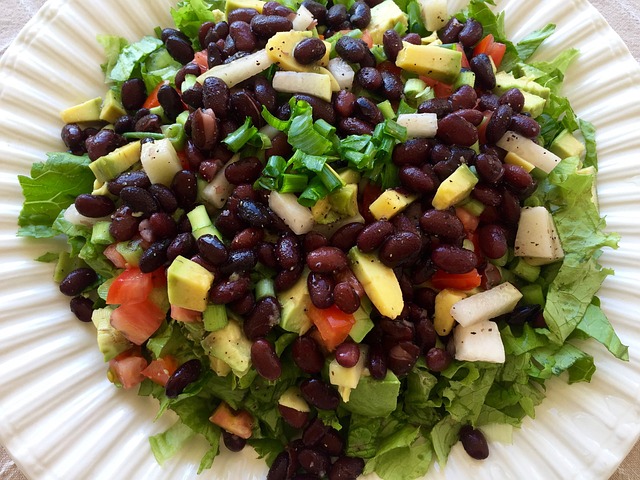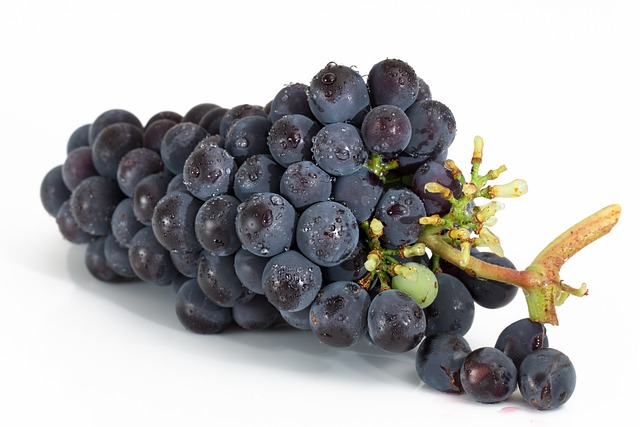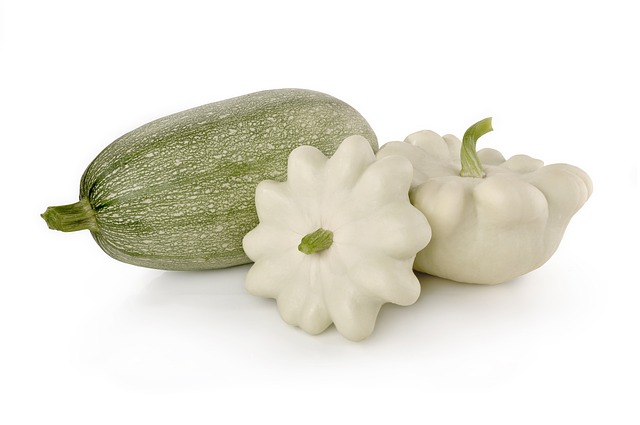Plant-based molecules or chemicals known as phytonutrients or phytochemicals have a favorable effect on the body and may play a role in illness prevention and treatment. While tens of thousands of these phytochemicals are expected to exist, only a limited number have been isolated and examined.
These nutrients, which include groups such as carotenoids, flavonoids, isothiocyanates, and many others, can have effects ranging from antioxidants to anti-inflammatory agents, as well as qualities that may be neuroprotective, give immunological support, control hormones, and much more.
Let’s find out about phytonutrients, their benefits on prevention and diseases, and how we can incorporate these preventive elements into your diet.
What Exactly Are Phytonutrients?
Vitamins, minerals, and macronutrients such as proteins, carbs, and lipids are not phytonutrients. These can be found in many fruits and vegetables, spices, and even edible flowers.
Several of these phytochemicals contribute to the color and smell of foods. Phytochemical-rich meals are often brightly colored, although white foods like onions, garlic, and even olive oil are high in these nutrients.
In terms of function, these nutrients are part of the plant’s “immune system,” as they guard against viruses, bacteria, fungi, and parasites.
Phytonutrient Advantages
Phytonutrients are crucial for good health and illness prevention. Phytochemicals play a variety of roles, including:

Fights Stress Due to Oxidative Conditions
Certain phytochemicals are antioxidants or “scavengers” in the body. The toxin, carcinogens in the environment, and normal metabolic activities in the body produce free radicals, which are unstable and highly reactive chemicals.
If left unchecked, free radicals can harm DNA and other cell components. (Oxidative DNA damage and subsequent mutations are precursors to cancer and many other diseases.) Antioxidants destroy free radicals, preventing them from causing damage.
Inflammation is reduced.
Several phytonutrients have anti-inflammatory properties. While inflammation is the body’s normal response to injury, it has been related to a variety of medical disorders ranging from connective tissue diseases to cancer.
Improves Immunity
Certain phytonutrients have unique effects and support immune system function. Certain phytochemicals, for example, operate as antimicrobial agents, reducing the likelihood of pathogenic (bad) bacteria or viruses dividing and growing in the body.
Phytonutrients may also aid in immune system modulation, assisting in the delicate balance between an overactive immune system (which can lead to autoimmune illnesses) and an underactive immune system (which can predispose to infections or cancer).
It safeguards your brain.
Current research has discovered evidence of neuroprotective effects of some phytonutrients in persons with illnesses such as Alzheimer’s and Parkinson’s disease. They include limonoids, berberine, curcumin, resveratrol, quercetin, and epigallocatechin-3-gallate. Further investigation is required.
Cancer prevention
Aside from the actions listed above, certain phytochemicals can aid in DNA repair (repairing damaged genes that might contribute to cancer), decrease tumor growth, or promote apoptosis (the process of cell death that gets rid of abnormal cells).
According to a 2018 study, phytochemicals are critical in the prevention of skin cancer (both melanoma and non-melanoma cancers).
Curcumin (which you can find in turmeric), proanthocyanidins (they are in berries and pistachios), and capsaicin were among the helpful nutrients (found in sweet red and chili peppers). In certain ways, your food can act as a type of sunscreen.
Reduces Aging Effects
Many phytochemicals have shown anti-aging potential in at least a few clinical trials and through various methods. Resveratrol, epicatechin, quercetin, curcumin, and allicin are some of the more well-known.
Aids in the Treatment of Illness
The majority of study has been on phytonutrients’ capacity to sustain health or prevent disease. Researchers are now attempting to determine whether phytochemicals can aid in the treatment of diseases.
These chemicals have the potential to be a significantly less expensive therapeutic adjunct with fewer adverse effects than standard medicines. While the research is in its early stages, preliminary findings include phloretin in pears, epigallocatechin-3-gallate (EGCG) in green tea, and quercetin in capers.
These investigations are typically conducted on lab-grown cells or animals, but in some situations, on humans. Flavonoids in berries, for example, may help combat heart disease.
Additional potential consequences are only now being considered. For example, scientists are investigating if phytochemicals have the ability to sensitize breast cancer cells to treatment, among other things.
Phytonutrient Types
Phytonutrients are classified as “bioactive food components” because their biological actions in the human body influence health. Because the major classes are based on chemical structure, classification can be perplexing.
These chemicals are most usually classified as phytonutrient groups. The list below is not exhaustive, but it does include some phytonutrients that should be included in a “rainbow diet,” as explained below.

Polyphenols
Polyphenols are a phytonutrient group that includes at least 500 recognized (and presumably many more yet-to-be-discovered) chemicals. Several of these substances are antioxidants, and their combination is thought to lower the risk of numerous diseases. They are classified as flavonoids, non-flavonoids, and phenolic acids.
Flavonoids
Flavonoids, also known as vitamin P, are phytonutrients rather than vitamins. They contain anti-inflammatory characteristics and may be able to prevent tumor growth.
Here are some types of flavonoids
- Anthocyanidins
- Quercetin
- Proanthocyanidins
- Resveratrol
- Flavanols
- Flavanones like hesperetin
- Flavones
- Isoflavones
- Catechins
The Phenolic Acids
They are Hydroxybenzoic acids, such as gallic acid, ellagic acid, vanillic acid, curcumin, and hydroxycinnamic acids.
Polyphenols that are not flavonoid
Curcuminoids such as curcumin, tannins, stilbenes such as resveratrol, cinnamic acid, and lignans such as silymarin are examples of non-flavonoid polyphenols.
Terpenoids
Terpenoids are further subdivided into carotenoid and non-carotenoid phytochemicals. Carotenoids are plant pigments that are related to vitamin A, but they also have antioxidant and immune system benefits. Some of these have the potential to suppress tumor growth. Beta-carotene, lycopene, lutein, alpha-carotene, beta-cryptoxanthin, zeaxanthin, and astaxanthin are among them.
Lycopene has been studied by researchers for its potential role in lowering the risk of prostate cancer. Cooked tomato products have the highest content of lycopene (think: spaghetti sauce, as heating results in better lycopene absorption). Lutein-rich foods include fresh tomatoes, watermelon, and others.
You can find lutein in foods like leafy greens, kiwi, and egg yolk; lutein has been associated with lowering the risk of macular degeneration (the main cause of blindness) and may alleviate computer-related eye discomfort.
Limonene, carnosol, saponins, phytosterols, perillyl alcohol, and ursolic acid are examples of non-carotenoid terpenoids.
Thiols
Thiols are phytonutrients having anti-cancer characteristics that may prevent carcinogens from being delivered into the body. Glucosinolates, allylic sulfides, and indoles are examples.
Glucosinolates contain isothiocyanates like sulforaphane. Sulforaphane is an antioxidant present in cruciferous vegetables such as broccoli, cabbage, cauliflower, radishes, and others.
Increasing Your Phytonutrient Intake
Including a diverse range of phytonutrients in your diet can provide numerous benefits, but many individuals are unsure where to begin. After all, standing in the produce area of your market with a list like the one above would be inconvenient.
Yet, there are very simple ways to ensure that you obtain the necessary minimum of five and up to thirteen servings of vegetables and fruits per day. Try eating a rainbow.
While many of these components are beneficial in and of themselves, it is the proper mix of nutrients that is important. Many plant color families include similar nutrients; for example, orange foods have the carotenoid group.
Eating a rainbow provides the best phytonutrients since the different colors provide unique health advantages. Lycopene in tomatoes and pink grapefruit, anthocyanins in blue and purple berries, and chocolate flavonoids, for example, are all healthy phytonutrients that work in distinct ways.
Below are five phytonutrient hues and some of their functions.
RED
Red foods include apples, melons, raspberries, beets, cherries, and grapefruit. They promote the health of the prostate, urinary tract, and DNA. Lycopene, ellagic acid, quercetin, hesperidin, and anthocyanidins are among the phytonutrients covered. They may also be beneficial in the prevention of cancer and heart disease.
Purple
Eggplant, grapes, blueberries, and blackberries are high in antioxidants that benefit your heart, brain, bone, arteries, and cognitive function. Resveratrol, anthocyanins, phenolics, and flavonoids are examples of phytonutrients.

Green
Green foods include green kiwi, avocado, cantaloupe, broccoli, and spinach. These foods promote eye health, artery health, liver health, and cell health. Lutein, epicatechins, isothiocyanate, zeaxanthin, isoflavones, flavonoids, and coumestans are some phytochemicals present in green foods.
White
Mushrooms, pears, and white onions are white foods that promote bone and circulatory health and may help prevent or fight heart disease and cancer. These foods contain phytochemicals such as allicin, quercetin, indoles, and glucosinolates.
Orange and yellow
Yellow and orange foods such as pumpkin, carrots, peaches, pineapple, and papaya encourage healthy growth and development as well as good eye health. Alpha-carotene, beta-carotene, beta-cryptoxanthin, lutein/zeaxanthin, and hesperidin are phytochemicals found in yellow and orange foods.
Eating Healthy Phytonutrients Strategies
Put a chart on the fridge to remind you and your children of the “colors” you’ve consumed and those you still need to consume each day.
Be inventive when it comes to food preparation. Salads can be “doctored” to include a variety of hues and, as a result, phytochemicals. Berries, vegetables, avocados, chia seeds, and other ingredients can be added.
Try “hiding” a vegetable or two in your main course. Cauliflower, for example, is easily concealed in spaghetti sauces, chili, and soups.

Instead of spaghetti noodles, try “noodles” made from zucchini or spaghetti squash.
Caution About Phytonutrients
A diet rich in phytochemicals, particularly different substances, can improve health. But keep in mind that eating too much tasty food isn’t always a good thing. An excess of one “excellent” food may result in a phytonutrient deficit.
Is it true that organic foods are superior?
While the evidence is still in its early stages, increasing your consumption of phytonutrients may be one incentive to buy organic foods wherever possible.
A 2017 study published in the Journal of Agricultural and Food Chemistry offers one example. This study discovered that onions grown organically have higher antioxidant activity and higher concentrations of flavonols and quercetin.
We won’t know the full story for a while, but this concept may help rationalize some of the higher prices for people who strive to eat organic.
People Suffering from Thyroid Disease (Goitrogens)
Several of the healthiest foods in terms of phytochemical composition also contain goitrogens, which have an anti-thyroid effect, which is significant to those who have thyroid illness or are at risk for thyroid disease.
Goitrogenic foods (such as broccoli high in sulforaphane) can still be consumed, but they should be spread out throughout the day. Some of these items can be reduced in goitrogen concentration by eating them cooked rather than raw.
Phytonutrients: Dietary vs. Supplemental
Certain supplements, on the other hand, may have the opposite impact. A famous example is the danger of lung cancer.
Researchers set out to explore if beta-carotene supplements would have the same impact after discovering that those who ate foods high in beta-carotene had a much-decreased risk of acquiring lung cancer. The supplement version of beta-carotene did not only not lower risk, but persons who used beta-carotene supplements had a much-increased risk of developing the condition.
Despite the numerous studies that have demonstrated a diet rich in vegetables and fruit to be advantageous to overall health, we have yet to gain the same benefits from phytonutrient supplementation.
To Conclude
Phytonutrients and phytochemicals are vital for good health and disease prevention. Rather than focusing on specific phytonutrients, eating a wide array of these nutrients is likely to provide the most substantial health advantages.
After all, many of the health benefits we get from eating a rainbow of colored fruits and vegetables may be due to phytonutrients that have yet to be found.
